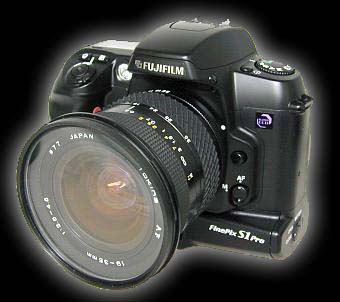A Fuji S1 Second Opinion
By Rich Shelton, Rich Shelton's Photography
Last Updated (04/01/2001)
Introduction
I'm also an avid amateur photographer. At least with photography, the logic goes, I get to use my equipment for years and years with no material depreciation (I have a Nikon FM with over 4,000 rolls through it!). For reference, my latest film body is a Nikon F100. Then along came digital, and the "early adopter" syndrome reared its ugly head once again. I've had a $900 640x480 point and shoot, a $900 Nikon Coolpix 900, a $600 Canon S100 (great camera!), and finally, a $3,800 Fuji S1 Pro, that you can now effectively buy for $2,300!
The holy grail for me has been to produce 11x14 and 16x20 prints at home that match 35mm quality using good lenses and a commercial darkroom. With the Fuji S1, Nikon lenses, and a good Epson printer (minus the "orange shift" problem...), we are finally there!
I've had my Fuji S1 since October, and have shot about 800 frames with it, mostly during our dreary Northeast winter. I'd like to give you my opinion of its pros and cons, and try to give a fair comparison to other popular digital SLRs.
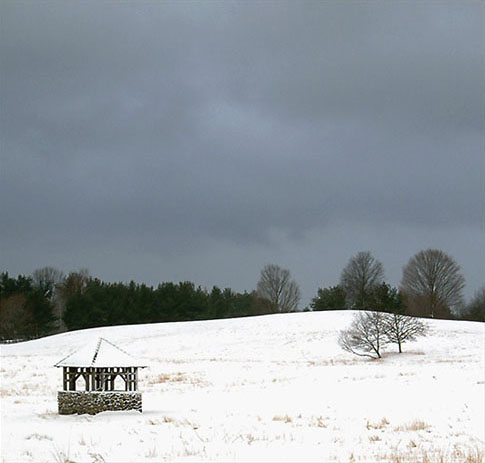
A Winter Storm
Fuji S1, Nikon 80-200 f/2.8, ORIG color & tone
What's Good About the Fuji S1?
- The best digital SLR color rendition.
- Complete control over saturation, tone, and sharpness "in camera".
- Highest resolution in its class.
- Accurate matrix metering.
- Nearly instant power-up.
- Well thought-out user interface; intuitive "orange LCD" for digital controls.
- The best high ISO performance (ISO 800 and ISO 1600).
- Works great with microdrives.
- Solid time exposure performance.
- Noise looks more like film grain than digital artifacts.
- Uses Nikon lenses (with some caveats).
- Uses NiMH AA Batteries, or alkalines when traveling in remote areas.
- Great battery life (without LCD, as many as 200 frames per charge).
- All SLR ccds get dirty. Designed to be cleaned by user (no trip to service dep't...).
- Weight (not much!)
- Cost (~$2,700, including a $400 1GB microdrive)
What's Bad About the Fuji S1?
- Based on cheap Nikon N60 SLR.
- More fragile than D1, for example.
- Can't use newest Nikon VR and AFS lenses in autofocus modes.
- Autofocus is slow and primitive compared to D1 or film bodies like the F100 or F5.
- Primitive TTL flash capabilities (no provision for clean fill or flash
compensation).
- Lowest ISO is 320. Means higher noise, and more difficult outdoor flash
setup.
- No RAW mode, although it has choice of JPG or TIFF.
- Slightly noisier in dark areas than D1 (with D1 at ISO 200 and S1 at 320).
- 6 megapixel setting gives no resolution advantage over 3.5 megapixel setting.
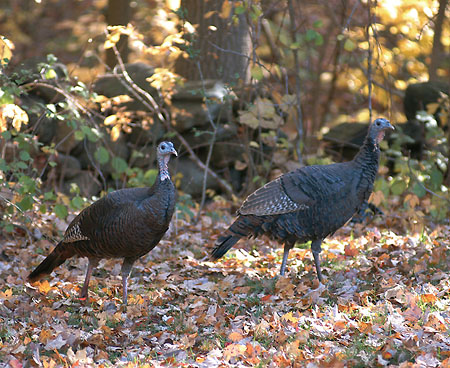
Wild Turkeys
Fuji S1, Nikon 80-200 f/2.8, Tamron 2x TC, STD color, ORIG tone
Comparing the S1 to Competing Digital SLRs (one opinion, anyway...)
| Attribute | Fuji S1 Pro | Nikon D1 | Canon D30 |
| Resolution (Pop Photo & Phil Askey) |
First | Third | Second |
| Color Accuracy | First; Normally perfect out of camera. | Third (improves using NEF mode) | Second |
| High ISO Quality / Low ISO Noise | Best of group at ISO 1600 - better than 800 film / Some random shadow noise even at ISO 320. Needs ISO 100! | Third (high ISO banding) / Very Clean ISO 200. | Second / Comparable to S1 |
| Time Exposure | Very Good | Good at Low ISO / Poor at High ISOs | Very Good; has noise reduction software |
| Autofocus / Firing Rate | Primitive (one sensor) / 1.5 fps in sports mode only | Best (ala F100) / 4.5 fps | Very Good multipoint / 3 fps |
| Flash | Primitive TTL; has a solid pop-up flash | OK with SB-28DX; no pop-up | Wonderful fill and balance; has pop-up |
| Power | Omnipresent AAs; optional CR123s for pop-up flash | Long-life Proprietary | Long-life proprietary |
| Storage | CF, microdrive, and smartmedia | CF; microdrives somewhat problematic | CF, microdrive |
| Build Quality | Solid so far, but looks fragile to me! | Nearly Indestructible | Purpose Built; similar to mid-range film. |
The Fuji S1 in Day to Day Use
Listed below are a few S1 shooting tips I've discovered along the way...
Color, Tone and Sharpness Settings:
Color:
ORIG - Like a portrait film
STD (default) - "Provia Plus", "Velvia Minus", or Ektachrome VS
HIGH - Velvia or Velvia+
B&W - Never use it. I mix RGB channels in Photoshop for greatest
flexibility.
Tone:
ORIG - low, neutral contrast
STD - (default)
HIGH - Almost like auto levels in photoshop. Too much for me!
Sharpness:
OFF - Close to the D30 "soft look"
STD (default) - Suitable for web use or direct printing.
HARD - Too much!
These settings give me a huge range of in-camera flexibility. I use ORIG/ORIG/OFF
for people shots. I use STD/ORIG/OFF for landscapes and nature shots. I use
STD/STD/STD for snapshots and candids.
The color accuracy out of this camera is excellent. Saturation is perfect
for people when set to ORIG.
Post-Processing
Although the camera does a good job
sharpening in STD mode, I find that it's best to leave the sharpening OFF, and use
Photoshops unsharp mask for custom sharpening. Each photograph is different and has
different sharpening requirements. My only exception to this rule is when I'm out
shooting candids or snaphots. Then I use STD sharpness.
Settings for Best Resolution
I took a large number of test shots using various 2304 mode (3.5 megapixel), 3040 mode (6 megapixel), JPG and TIFF combinations. I analyzed them carefully in Photoshop, and came to the following conclusions:
- There is no advantage to shooting in 3040
(6 MP) mode.
In some cases, artifacts were worse than GF or Bicubic
interpolation in PS.
- TIFF mode offers better fine detail than JPG FINE, but slows the camera down.
- JPG NORM and BASIC are pretty crude. Stick to JPG FINE or TIFF.
Based on the above, I shoot in TIFF 2304 mode when I'm shooting less than 96 frames (1 GB
microdrive capacity), and when I don't need continuous shooting. Otherwise, I use
2304 JPG FINE (746 frames on a 1GB microdrive).
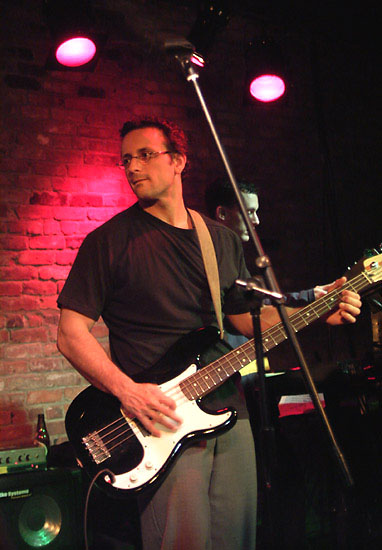
One of my Bandmates...
Fuji S1, ISO 1600(!), Tokina 20-35, 1/45s @ f/2.8
Conclusions (for now...)
On the other hand, the S1 is not a good choice for a photojournalist or full-time sports photographer. It's probably not durable enough, and its flash and autofocus limitations make the Nikon D1 series more suitable for those lines of work. For something like wedding candids or people photos, however, I'd take the S1 even with its flash limitations.
This camera would have cost $20,000 three years ago, yet it will be an outdated hand-me-down in two or three years! You've got to love the pace of advancement in the digital imaging arena. Products like the S1 raise the bar, and lower the price point for new models, and that's the best news of all.
If you have any questions, feel
free to reach me at rich at sheltons.net, or stop by my web site
UPDATE - I've recently
discovered a somewhat annoying green color caste problem with the S1. Read my description of it and solution HERE.
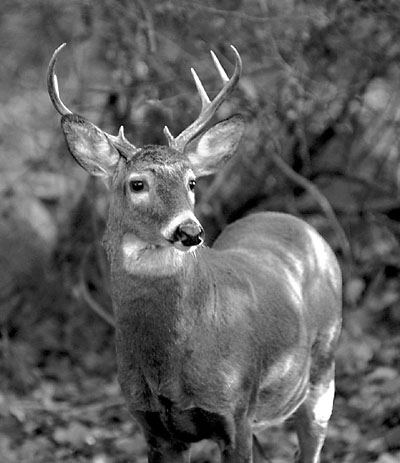
Wild Buck
Fuji S1, Nikon 80-200 f/2.8
